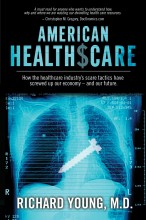There are multiple lines of evidence that doing more things to patients doesn’t always result in better health. I summarize a few examples here.
Dartmouth Studies
Researchers at Dartmouth University examined the relationship between medical resources used and the resulting health outcomes in people nearing the end of their lives in two California regions, Los Angeles and Sacramento.
In Los Angeles, the patients used 61% more hospital beds, 128% more intensive care unit (ICU) beds, and 89% more physician labor in the management of chronically ill patients during the last two years of life compared to Sacramento. In spite of this intense use of medical resources, the quality of care for patients with heart attacks, heart failure, and pneumonia was worse in Los Angeles. Patients did not enjoy this aggressive care either. Patients rated 57% of Los Angeles hospitals as below average compared to 13% of Sacramento hospitals.
What are the cost implications of the overly aggressive care in Los Angeles? If the Los Angeles hospitals had functioned at the same level as the Sacramento hospitals over the five years of the study measuring these differences, the savings to the Medicare system would have been approximately $1.7 billion.
Brain Aneurysms
Researchers studied immediate family members of patients who had symptomatic brain aneurysms. The researchers wanted to know if finding and surgically fixing aneurysms in the healthy family members who had no aneurysm symptoms would prevent strokes and deaths. The results were basically that many people were injured as a result of the surgery, which the researchers didn’t feel justified the few saved lives.
The Medical Outcomes Studies
In the late 1980s and early 1990s a series of studies called the Medical Outcomes Studies were completed. Their purpose was to measure differences in medical resources used and health outcomes in patients with common conditions who saw different kinds of doctors. They wanted to know if ologist care led to better health compared to primary care, and how the doctors differed in practice styles. The researchers studied patients with high blood pressure and diabetes.
For high blood pressure, patients of cardiologists had more office visits, more prescriptions, more lab tests per physician visit, and were more likely to be hospitalized. There was no difference between the three physician types for average blood pressure, complications, or physical function.
For diabetes, patients of endocrinologists were found to have higher hospitalization rates, more office visits, more prescription drugs, and more lab tests per physician visit than family physicians. There was no difference between the three physicians for average sugar levels, physical functioning, and almost all diabetic complications.
Summary
These are just a few examples of how more aggressive medical care doesn’t always result in better health. All of the GIMeC members typically support the notion that more is better. Overcoming this aggression bias will be one of our big challenges in reforming our healthcare system.
References
Wennberg DE, Fisher ES, Goodman DC, Skinner JS, Bronner KK, Sharp SM. Taking care of patients with severe chronic disease: the Dartmouth atlas of health care 2008. The Dartmouth Institute for Health Policy and Clinical Practice Center for Health Policy Research [online]. 2008 [cited 2009 May 2]. Available from: http://www.dartmouthatlas.org/atlases/2008_Chronic_Care_Atlas.pdf.
Risks and benefits of screening for intracranial aneurysms in first-degree relatives of patients with sporadic subarachnoid hemorrhage. N Engl J Med. Oct 28 1999;341(18):1344-1350.
Vernooij MW, Ikram MA, Tanghe HL, et al. Incidental findings on brain MRI in the general population. N Engl J Med. Nov 1 2007;357(18):1821-1828.
Greenfield S, Nelson EC, Zubkoff M, et al. Variations in resource utilization among medical specialties and systems of care. Results from the medical outcomes study. JAMA. Mar 25 1992;267(12):1624-1630.
Greenfield S, Rogers W, Mangotich M, Carney MF, Tarlov AR. Outcomes of patients with hypertension and non-insulin dependent diabetes mellitus treated by different systems and specialties. Results from the medical outcomes study. JAMA. Nov 8 1995;274(18):1436-1444.



Recent Comments